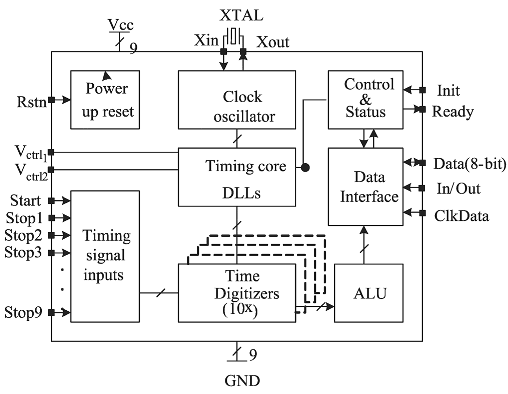Abstract: We propose a new telemeter scheme for absolute distance measurements, based on a semiconductor ring laser, working in the bistability regime. The optical feedback provided by two external reflectors (a fixed one at short distance, and a moveable one defining the measuring arm) generates commutations of the propagation direction (clockwise, counter-clockwise) inside the ring laser, the period of which is linearly related to the distance of the measure arm reflector. A convenient electrical output signal can be easily obtained by a photodiode located behind the (partially reflecting) fixed mirror. This telemeter, which combines time-of-flight and optical injection, is very simple to implement, since, in addition to the laser, it only requires mirrors and collimation or focusing optics. Also electronic driving and processing are straightforward. Differently from most time-of-flight telemeters, this scheme does not require special provisions or processing to tackle the ambiguity problem. Simulations are performed by mathematical models based on rate-equations. This telemeter has been evaluated in the range 10 cm–32 m of round trip distance, with a fixed arm of 10 μm–10 cm, assuming typical literature parameters for a 1 mW ring laser.









